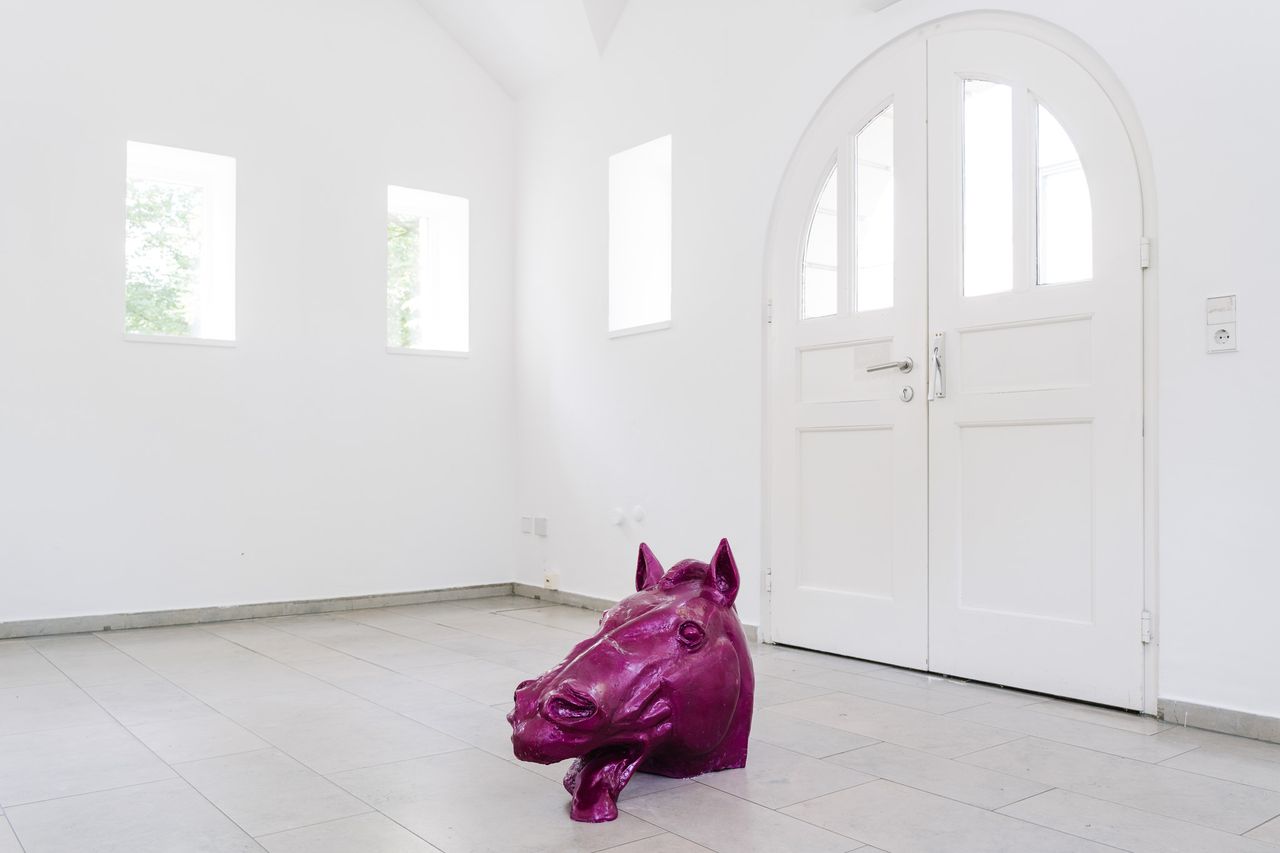
Concrete, Plaster, Reinforcing Steel, Pigment, Acrylic Lacquer, 2022. Photo by Ana Rodriguez
Martin Reichmann. abtrünnig
“Martin Reichmann works primarily as a sculptor, although his works are somewhere between installation and sculpture, and at times function more as spatial interventions. Characteristic is an amateurish and heavy-handed approach to building materials, which repeatedly lead to architectural, ‘botched construction’ sculptures, not to be misunderstood as a mimicry of botch, rather as new, ruined relics of another unprecedented time. The preferred material of choice for this is concrete. Particularly because it is often misunderstood as a newer material, provocative contrasts of material and form arise when ancient-looking temple complexes are cast in it where we would otherwise expect bunkers and perimeter walls. In search of new forms, he draws from the disenchanted of the world. Contemplation of the ugly and the excessive, the ugliness of our environment leads to reflection upon and the desire to increase this ugliness, thereby transforming it. Surrealistic, dystopian and rustic, the works suddenly appear in the forest or in a communal kitchen and force you to look at them. It is almost impossible to ignore. There is also a defiant, contrarian attitude in this method of working, which also easily resists the practice of experimentation and research, instead relying on a post-chavish, slightly humorous-sarcastic assertion: Here I am - take it or leave it, you can find something better everywhere.
The practice of transforming/translating everyday objects into a different material also leads to more or less aesthetically interesting results, but never strives for an academically precise, disciplined and exhausting method of research. The ugliness of objects is a recurring theme, as well as excess and frivolous spending on ‘stupid’ ideas. Art as a sporting challenge: set a challenge, accept a challenge. Overcome challenge, emptiness, calmness, resolution. The challenge consists of tasks that are beyond the budget or the time frame or seem technically impossible and need to be finished under stress and effort by whatever means necessary.
This method of working was discarded for the master student exhibition and a new approach was chosen with a classic, old-fashioned practice and theme: horses, antiquity, addition, subtraction, removal, modulation, construction, cutting, stacking, kneading, rasping, grinding, material, form, action, space. Create sculptures and then somehow have to set them. Material, space and other works relate to one another and work with or against each other. Decision and stipulation exclude arbitrariness. The work is called ‘Apostate’ and is a multi-part interpretation of the famous ancient horse's head from the east pediment of the Parthenon (now controversially on display in the British Museum). The title already shows that a rebellious moment is buried here, but also that a severed head is placed here.
The old gatehouse, which is known today as the Gerhard-Marcks-Haus, already refers to antiquity through its classicist architecture and the two concrete reliefs produced in an amateurish way evoke an architectural purpose, they could be the relics of a keystone or other decorative elements far away from being gallery art, dismantled and discarded. Everyday ugliness has set in to rot like severed heads: tongues limp, eyes vacant. But there is still hope: A third head that has not yet fallen to the ground. Based on the appearance of a fairground, with its kitschy, trashy figures and airbrush aesthetics, the distorted horse's head resting on its neck stump in flashy glitter paint stands in contrast to the ruinous concrete reliefs, which linger in the room as heavy as lead. The ancient polychrome finds its modern counterpart in the form of colourful lacquer. The head oscillates between a high-gloss product and the caustic cheap-chic of a bumper car body. The arrogant, supposedly-white heritage is made fun of. Sometimes something beautiful is taken and made ugly and other times something ugly is taken and made even uglier. Every now and then something interesting comes out of it and that is why artists do it, that is the requirement."
I would like to thank my friends for this text about my sculptural practice.